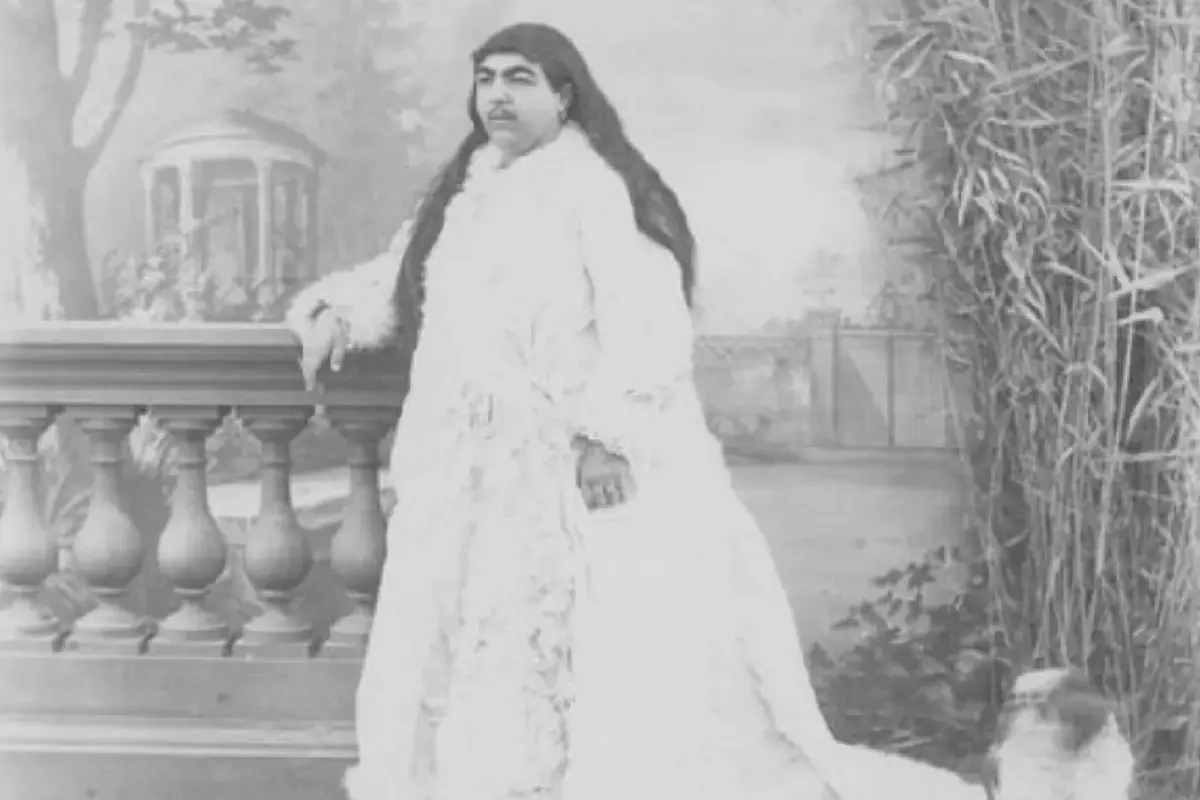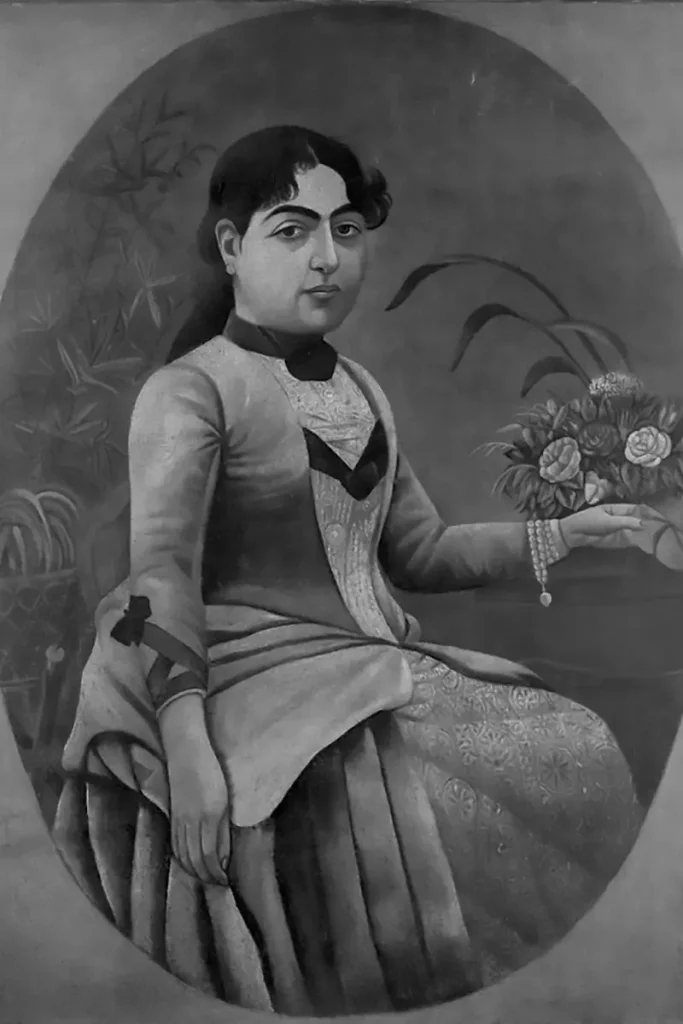Today we see her as ugly, but Princess Tāj-al-Salṭana was a symbol of womanity, feminist struggle and a pioneer of intersectionality. History of the woman who influenced Persia
Tāj-al-Salṭana pioneer of the concept of diversity and inclusion
A canon of beauty is an ideal that is based on some specific characteristics of things or people. A marked subjectivity is also evident regarding the concept of beauty due to the passage of time.
Through literature, history, and especially art, it is possible to view the transformation of canons, as well as to understand the ideals that have defined beauty throughout history. Currently, it is linked to diversity and inclusion, something that was already being introduced by the likes of TJ al Salaana in the less recent past, perhaps unconsciously.
The first Persian feminist, Tj-al-Salana represents a beauty far removed from contemporary aesthetic standards. While diversity and inclusion begin with the recognition of the other than oneself and its characteristics, her images today have created a stir, in the negative sense. Recognizing differences, but overcoming the subjective concept of beauty influenced by a given historical period.
Womanity: changing concept of beauty over decades
Today, globalization flattens diversity, making the concept of beauty more uniform and less geographically diverse. What remains unchanged is the focus of these canons with respect to female aesthetics; womanhood has often occupied a prominent position in defining them. Beauty and the beautiful have been investigated by philosophy, art, poetry and every form that could express itself with respect to aesthetics, without ever finding an unambiguous answer. In prehistory the concept of beauty contemplated was that of the Venus of Willendorf, where abundant forms were symbols of new life.
The Egyptians tied the representation of slimmer bodies to mythology, and the Greeks then relied yes on proportions and harmony but also on qualities extrinsic from visual ones by tacking on a body of attributes that represented the concept of beauty.
From Romans to Tāj-al-Salṭana until the contemporaneity
This idealization was followed by some attention to realism and the exaltation of the same by the Romans, flanked by concepts of common sense and moderation traceable in the writings of the poet Horace. In the Middle Ages aesthetics was founded on mathematical principles, also beginning to define the concept of the ugly as part of creation.
Then between 1400 and 1500 came Leonardo Da Vinci’s Vitruvian Man, proportions and the elevation of the human figure to the center, and then blossomed in the Renaissance into the supersensible beauty between man and nature. The centuries to follow saw the exaltation of sensual beauty explicated for example in Baroque art.
Between subjective aspects and objective value, the notion of aesthetic taste developed in the eighteenth century; in the following historical period the sublime and harmony were two aspects taken into consideration with respect to the concept of beauty. In the West in the 1800s there was a period of adoration for Victorian bourgeois culture, extolling the lifestyle of fair-skinned, affluent, smiling women with soft lines.
In contrast, in the East, Tāj-al-Salṭana embodied the concept of beauty through masculine features, prosperous shapes and hair that adorned every part of the body considered pleasing. The variety of theoretical and aesthetic definitions is symbolic of a focus on human diversity, although it is tied to canons. Contemporaneity tries to dispense with the physical and appearance component, going further in defining an immaterial beauty.
How human diversity meet feminism definition: the role of Tāj-al-Salṭana
Human diversity has characterized womanity struggles not only in terms of cultural and geographical variety, but also in terms of singular struggles with respect to gender, religion, skin color, and disability. In the specific case, Tāj-al-Salṭana became involved as a feminist in women’s rights in Iran, founding in 1910 with other comrades the underground group for Persian women’s rights called Anjoman Horriyyat Nsevan (Women’s Freedom Society).
The concept of intersectionality is what made feminist theory broad-minded in a diversity and inclusion sense, placing variety among women on different levels at the center of action. Starting out as movements and ideologies from affluent or otherwise privileged women, initially these types of movements lacked achieving generic frameworks that united various experiences in a unique sense.
Intersectionality, which originated as a definition in 1989 by activist Kimberlé Crenshaw, set as the basis of feminism the possibility of overlapping different social identities, with attention to minority conditions as well. Aesthetics, religion, the situation of women in that historical period and geographical context for example are some points that unite Tāj-al-Salṭana’s work toward women’s emancipation in Iran.
How beauty responds feminist needs, from the first Persian womanist
«When the day comes when I see my sex emancipated and my country on the road to progress, I will sacrifice myself on the battlefield of freedom, shedding my blood along with that of my fellow freedom-loving people fighting for their rights», these are some of the premises of Tāj-al-Salṭana, traceable in the collection of writings Memoirs, which appear contemporary although they were written in the late 1800s and early 1900s.
The concept of beauty has to do with image and aesthetics, which have to do with the revolution from which womanity instances take their cue. In the case of Tāj-al-Salṭana, the veil, again referring to her frameworks and layers of belonging, was one of the symbols, part of the Persian woman’s appearance, that she eliminated into a symbol of emancipation and self-image definition.
Breaking free from culture and reaching out to other aesthetic and visual instances was for Tāj-al-Salṭana a symbol of her feminist struggle, in fact she is remembered for being the first woman in the royal court to remove her hijab and wear Western clothes.
This may sound like a simplistic reduction of the womanity issue, but indeed the symbols and aesthetics are linked to the demands of the movement. The recent reintroduction of compulsory headscarf wearing in Iran, followed by the killing of Mahsa/Zhina Amini and the continuing riots under the cry of Woman, Life, Freedom are examples of this.
Feminism intersectionality definition and beauty as control of bodies
The Beauty Myth: How Images of Beauty Are Used Against Women is a written exemplification by Naomi Wolf on why the concept of beauty and women have come to a collision point. The issue highlighted does not refer to the type of body women have to deal with or make-up or outward appearance, but to when beauty has become a normative aspect that legislates the everyday life of the female gender.
The concept of beauty is introjected as a myth and compulsive pursuit, Wolf defines it as a tyranny that through the centuries has and continues to implement an oppressive function. In this sense, she points out, beauty still hinders the struggle for gender equality by creeping into different aspects of life, from male-female relationships to female-female relationships to media and literary narratives and in everyday contexts such as the home or work.
«The real problem has nothing to do with whether women wear makeup or not, whether they gain weight or lose weight, whether they undergo cosmetic surgery or do without it, whether they dress well or poorly, whether they turn their clothing, face and body into a work of art, or whether they neglect any kind of adornment. The real problem is our lack of choice», Wolf points out.
It is a definitional look at women by the hetero cis white able-bodied patriarchy that forces women to chase the current concept of beauty. This control has allowed for the exercise of violence resulting in episodes of condemnation or judgment of others’ bodies as in the case of fatphobia.
Concept of beauty in the contemporary, the contribution of Tāj-al-Salṭana
Although Wolf’s work dates back to 1990, the non-victimistic meaning of reappropriation of one’s corporeality in a conception of human diversity is thoroughly contemporary. Dismantling the aforementioned canons allows one to move beyond the bodily standards dictated by the concept of beauty under which further occasions of marginalization of the individual have occurred.
The actions performed by Tāj-al-Salṭana bring back the contemporaneity of the intersectionality feminist perspective that does not demonize aesthetics and beauty, but pursues self-determination that replaces oppression and control. In the contemporary, the concept of beauty has been revolutionized from this perspective, although this dynamic remains complex to unhinge.
On the one hand, there are still unreal models that media and phenomena such as the influencer propagate, but on the other hand, the concept of human diversity and inclusion has relevance today. This is also to be ascribed to the intersectionality that has set as its basis the consideration of various experiences by placing disabled bodies, trans bodies, bodies of different ethnicities in the same social and political context and more at the center of the discussion. Thus, beauty becomes a means of awareness and vindication away from mere aesthetic conception.
Tāj-al-Salṭana
Active in the late 1800s and early 1900s in the area of Persia, Princess Tāj-al-Salṭana belonged to the Qajar dynasty. Considered the first Persian feminist, she was also a writer who was active in the gender struggles.




















